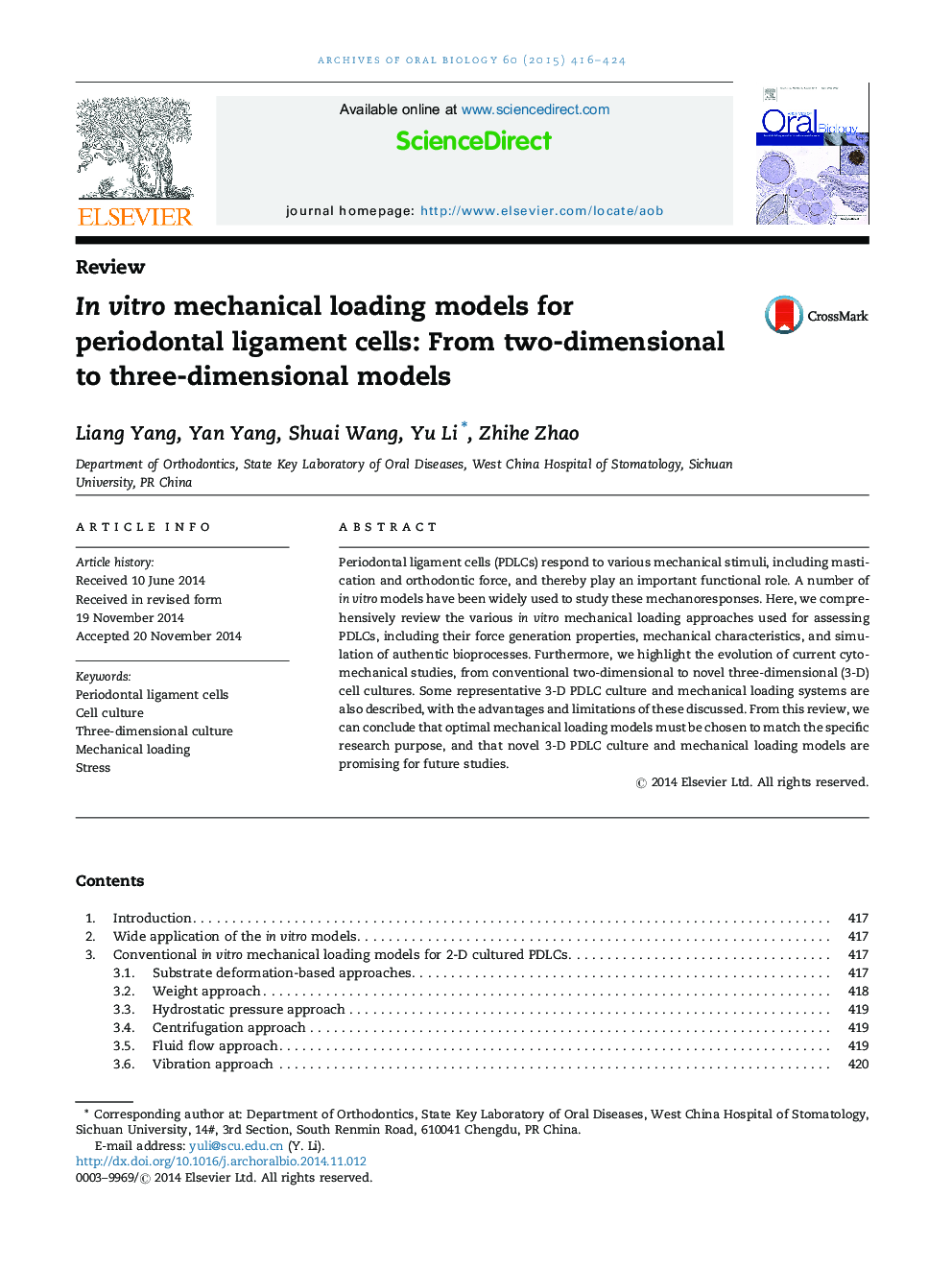| Article ID | Journal | Published Year | Pages | File Type |
|---|---|---|---|---|
| 3120789 | Archives of Oral Biology | 2015 | 9 Pages |
•A comprehensive review on various in vitro mechanical loading models for PDLCs.•Choice of optimal mechanical loading models should be based on research purpose.•In vitro 3-D culture and mechanical loading models are promising in future studies.
Periodontal ligament cells (PDLCs) respond to various mechanical stimuli, including mastication and orthodontic force, and thereby play an important functional role. A number of in vitro models have been widely used to study these mechanoresponses. Here, we comprehensively review the various in vitro mechanical loading approaches used for assessing PDLCs, including their force generation properties, mechanical characteristics, and simulation of authentic bioprocesses. Furthermore, we highlight the evolution of current cytomechanical studies, from conventional two-dimensional to novel three-dimensional (3-D) cell cultures. Some representative 3-D PDLC culture and mechanical loading systems are also described, with the advantages and limitations of these discussed. From this review, we can conclude that optimal mechanical loading models must be chosen to match the specific research purpose, and that novel 3-D PDLC culture and mechanical loading models are promising for future studies.
